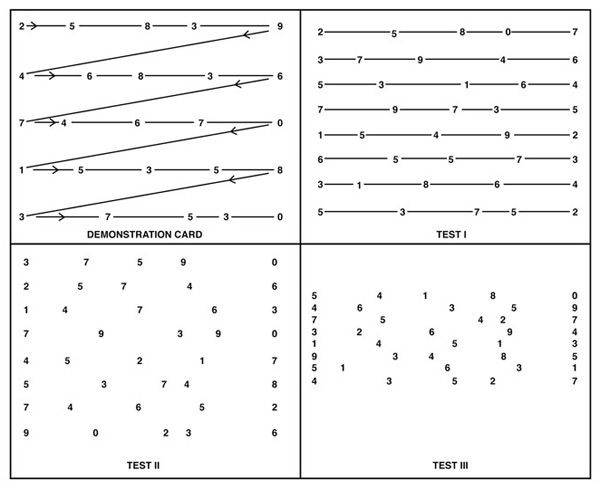The King-Devick Concussion Test is an easy to administer test of concussion based on reading numbers on a chart as past as possible after a potential concussion event, and comparing results to a baseline measure.
- aim: to simply and quickly assess if a person has been concussed.
- equipment required: printout of the King-Devick Concussion Test cards (see example below), stopwatch
- procedure: First a baseline measurement is required. During preseason, use a stopwatch to time the athlete as he or she reads off the numbers on each line of the cards from left to right as quickly as possible. The cards should be read in order. For the baseline measure, have the athletes perform the test twice and use their best score. During the season, if an athlete is suspected of sustaining a concussion, have them repeat the test on the sidelines, and compare the speeds.
- results: Compare the sideline score to the baseline measurement. If the time is slower, even by a small amount, the athlete probably has a concussion.
- advantages: this is a simple and inexpensive screening test for concussion, requiring no medical training to conduct and interpret the test results.
- comments: note that uninjured athletes are usually faster at reading the numbers during games or practices because physical exertion sharpens the kind of visual performance being tested.
 King-Devick Concussion Test
King-Devick Concussion TestUsing This Test
I have presented the test details for information purposes. If you wish to use this tool in your athlete evaluation or research, you need to determine if you need permission. I don't have the authority to give you that permission if required.
Related Pages
- About concussion
- Other concussion tests: imPACT, SCAT, SAC
- Full list of health tests.
- Health Tests for Athletes


 Current Events
Current Events